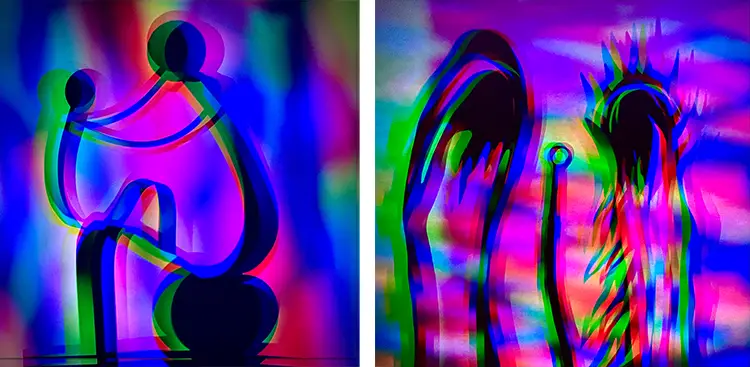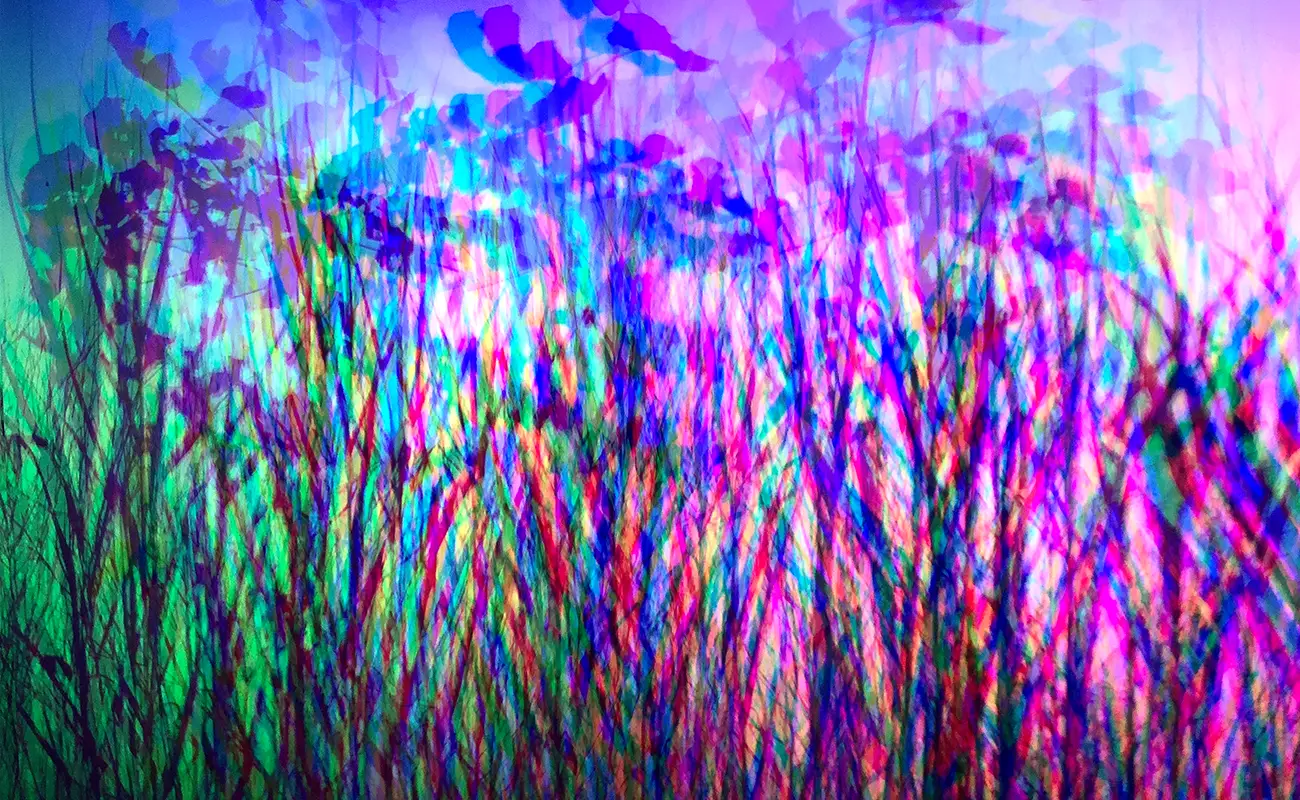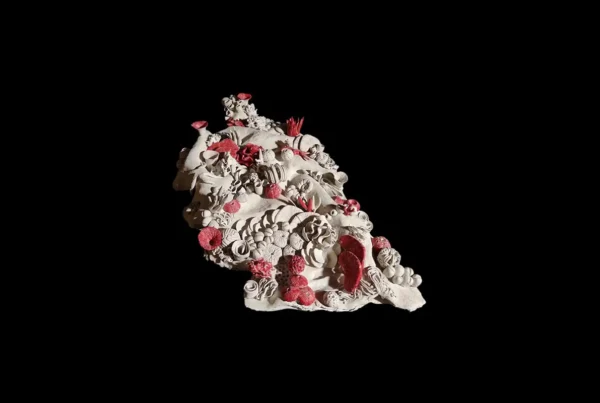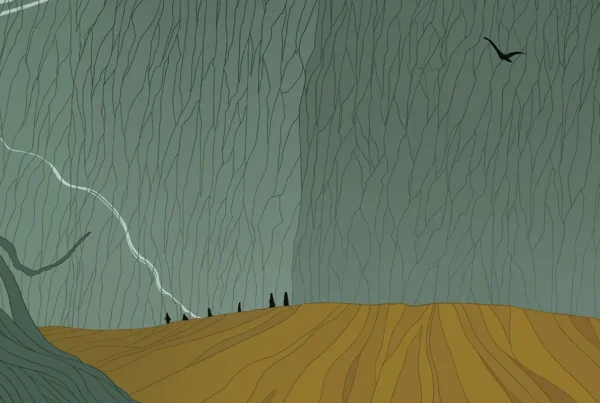“‘Painting with the Colors of Light’ challenges the preconceived notion that art consists of computer-generated images.”
Reimagining Light: Beyond the Spectrum of Tradition
Few contemporary artistic movements dare to redefine both medium and method so radically as Die DNA des Lichtes. The collaborative project by Paul Heinrich Neuhorst and Ilka Henkel introduces a wholly original way of creating art—one that casts aside canvas and pigment in favor of illuminated spectral color. The phrase “Painting with the Colors of Light” describes more than a technique; it introduces a philosophy where light is not just an enhancer of visual art but its very foundation. This departure from traditional aesthetics into an experience shaped by optical science and emotion marks a pivotal moment in modern creative expression.
At its core, Die DNA des Lichtes challenges the assumption that digital innovation in visual art must rely on computer generation. Instead, Neuhorst and Henkel have engineered a process that harnesses the very physics of light, deconstructing it into its visible spectrum and rebuilding it into visual compositions through a process akin to light choreography. Through the use of diverse light sources, filters, and projections, they create immersive, evolving artworks that blur the boundary between physical and perceptual space. These aren’t static images but living displays, shifting in color and dimensionality with each interaction.
One of the most striking aspects of this art form is its interactivity. The viewer isn’t merely a spectator but a participant. With embedded LED technology and programmable light transitions, each piece can be personalized, responding to mood, season, or time of day. Whether warming a winter space with enhanced red hues or cooling a summer room with blue-toned displays, these artworks offer not only visual impact but environmental transformation. This synthesis of user control and emotional resonance underscores a vital point: in Die DNA des Lichtes, art is not only seen—it is experienced, manipulated, and lived.
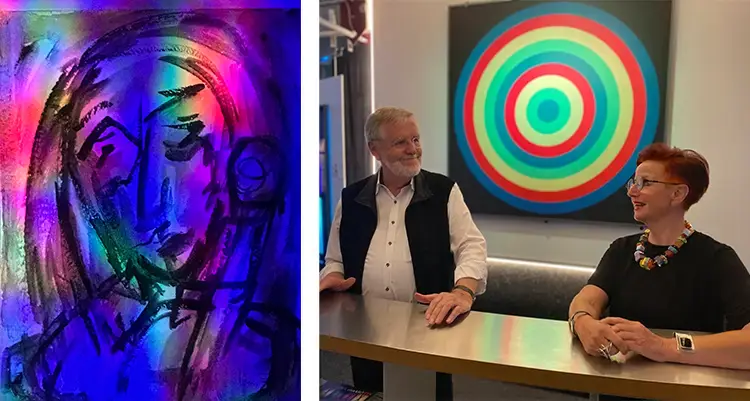
Paul Heinrich Neuhorst & Ilka Henkel: Architects of Luminous Emotion
Paul Heinrich Neuhorst brings to this innovative practice a storied background in lighting design and product development. With over 62 international awards and more than 30 patents to his name, Neuhorst’s expertise lies not only in artistic intuition but in the engineering precision of light itself. For him, light is both passion and profession. His lifelong dedication to exploring its nuances has culminated in a body of work where luminance and color assume the roles of texture and form, replacing brushes and pigment with photons and filters. The deliberate calibration of hues mimics a painter’s palette, yet extends into a dynamic realm of change and interactivity rarely found in visual art.
Working alongside Neuhorst is Ilka Henkel, whose technical background as a mechanical engineer seamlessly complements her talents as a multi-disciplinary artist. Her experience with international exhibitions and technical consultancy adds both structural understanding and creative diversity to their joint work. Together, Neuhorst and Henkel embody a rare artistic symbiosis where design meets vision, where the scientific meets the emotional. Their collaboration thrives at the intersection of functionality and artistic expression, pushing boundaries through a shared commitment to innovation.
The pair’s artistic process echoes traditional painting in its foundational stages, yet diverges with its medium: pure colored light. Through orchestrating red, green, and blue tones, they craft visual harmonies and contrasts as a choreographer stages movement and mood. Once constructed, the work is further transformed through lighting installations that manipulate reflection, refraction, and projection. These stages culminate in artworks that feel alive—malleable to time, space, and sensation. In their hands, light becomes more than illumination; it is character, narrative, and dialogue all at once.
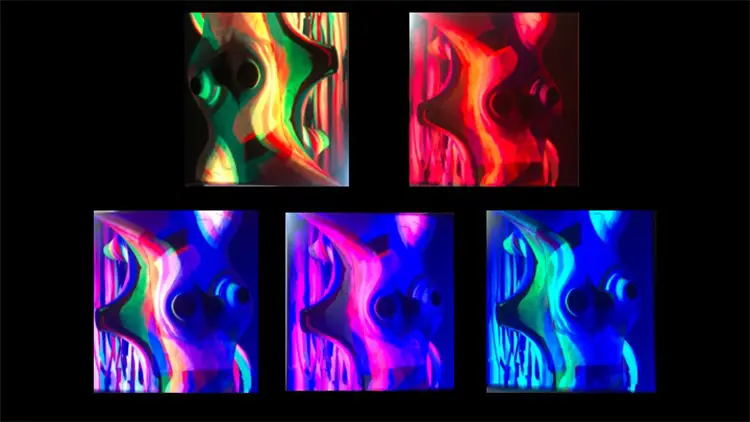
The Living Canvas: Art That Breathes and Evolves
There is a kinetic intensity to the works created under the banner of Die DNA des Lichtes. Unlike traditional static images, these pieces pulse, transform, and adapt—imbued with an almost organic responsiveness. The technology embedded within each piece allows for shifts in tone and hue that alter not only the image itself but the atmosphere of the space it inhabits. This capacity to shift perception gives the owner an unparalleled role: not just collector, but co-creator. With a few adjustments, they can warm a cold space, calm a chaotic one, or energize a dull moment—all through the modulation of light.
Neuhorst and Henkel’s approach incorporates both abstract and impressionistic influences. They channel these into fluid, wave-like motions and vividly layered compositions that reflect emotional intricacies and psychological nuance. These transitions aren’t simply visual; they invite contemplation, encouraging viewers to interpret and internalize what they see. Each artwork serves as a mirror to the viewer’s state of mind, enabling a kind of visual introspection that transcends surface aesthetics. The shifts in light patterns create an emotional cadence, guiding the observer through a rhythm of contemplation and wonder.
This sensorial complexity is exemplified in one of their signature pieces: The Standing Nude. Presented in multiple color variants, the artwork captures the essence of form and emotion through shifting chromatic tones. As the lighting cycles evolve, the figure seems to shift from static object to breathing presence. Here, the layering of light speaks to the layering of identity, memory, and emotional duality. The figure is not confined to one representation but evolves with each viewer’s interaction—an emblem of the entire philosophy behind Die DNA des Lichtes. Through the integration of abstract motion and impressionistic warmth, the artists explore the depth of human perception with radiant precision.
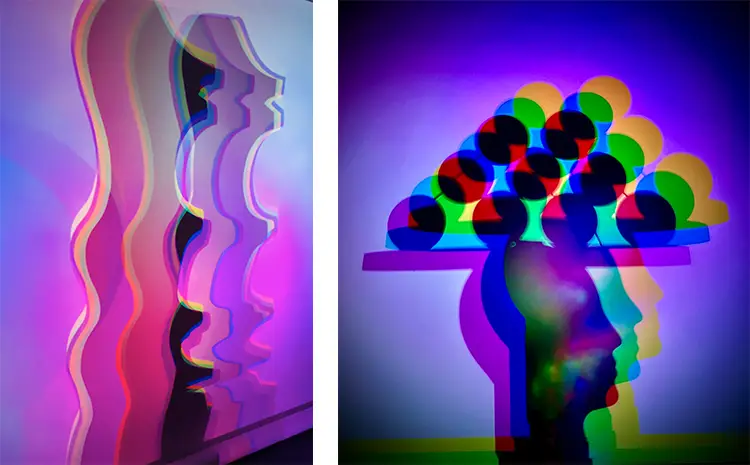
Die DNA des Lichtes: Sculpting Emotion in Light and Space
Neuhorst and Henkel’s unique contribution lies not only in their groundbreaking use of materials but in their ability to blur the lines between art, design, and spatial transformation. Their work transforms rooms, affects temperature perception, and reshapes emotional atmospheres—functioning as both aesthetic centerpiece and ambient influence. The interactive backlighting technology built into their pieces offers flexibility that traditional art cannot. Owners are empowered to engage directly with the artwork, adapting its appearance to match mood or season. This customizable experience makes each artwork an ongoing conversation between creator, viewer, and environment.
This dynamic adaptability rests on decades of expertise with light’s properties, behaviors, and emotional impacts. Neuhorst’s and Henkel’s deep understanding of natural and artificial lighting enables them to craft visuals that resonate on a fundamental human level. Their ability to internalize and reinterpret environmental cues—shadows in nature, variations in sunlight, emotional response to hues—elevates their pieces beyond decorative function. Each light sequence is informed by both technical precision and sensory empathy, creating an aesthetic that is as emotionally rich as it is visually striking.
Rather than pursuing art for decoration alone, Die DNA des Lichtes seeks to redefine how we interact with art in our daily lives. Their installations are not passive elements hung on a wall—they are instruments for emotional modulation and self-reflection. By inviting the owner into the artistic process, Neuhorst and Henkel offer something rare in the art world: agency. The ability to influence one’s emotional climate through aesthetic engagement marks a significant evolution in how we understand both light and art. In doing so, they have opened a new path where emotion, science, and artistry converge—transforming not just how we see art, but how we live with it.
